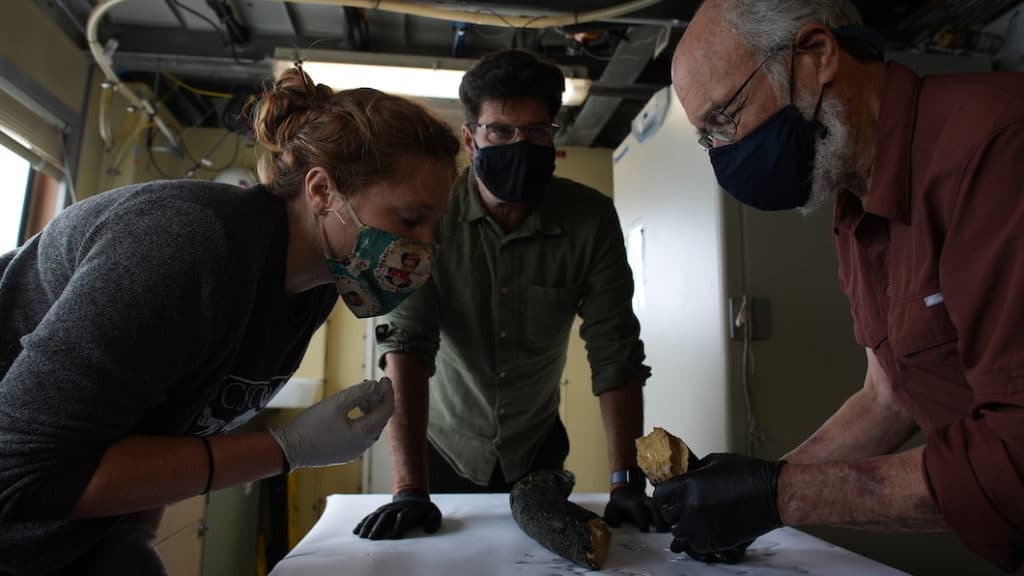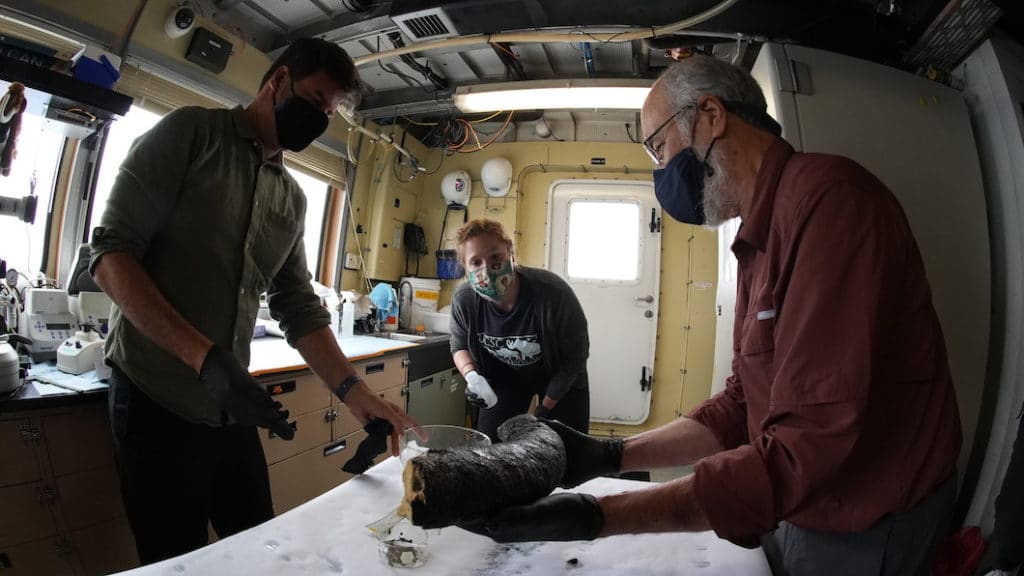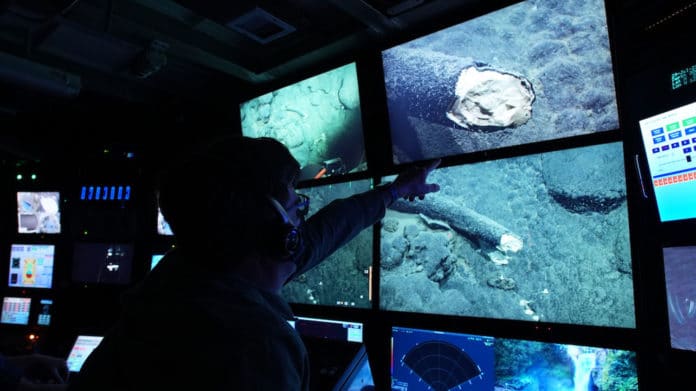Our oceans hide so many secrets. During a deep-sea expedition, Monterey Bay Aquarium Research Institute (MBARI) has discovered what looked like an ancient mammoth tusk.
The discovery was made during an expedition aboard the R/V Western Flyer in 2019. The team was exploring a seamount located 300 kilometers (185 miles) offshore of California and 3,070 meters (10,000 feet) deep.
At that time, the team was able to collect a small piece at the time. MBARI returned in July 2021 to retrieve the complete specimen.
The ancient mammoth tusk is about one meter in length. According to scientists, it is from a Columbian mammoth (Mammuthus columbi). Thanks to the cold, high-pressure environment of the deep sea, the tusk was preserved uniquely. This preserved tusk offered scientists an opportunity to study it in greater detail.

Performing CT scans on the tusk will reveal the 3Dinternal structure of the tusk and more information about the animal’s history, such as its age.
Using the knowledge, scientists will investigate when and how the tusk may have arrived deep offshore.
Senior Scientist Steven Haddock said, “You start to ‘expect the unexpected when exploring the deep sea, but I’m still stunned that we came upon the ancient tusk of a mammoth. We are grateful to have a multidisciplinary team analyzing this remarkable specimen, including a geochronologist, oceanographers, paleogenomics from UCSC, and paleontologists at the University of Michigan. Our work examining this exciting discovery is just beginning, and we look forward to sharing more information in the future.”
University of Michigan paleontologist Daniel Fisher said, “This specimen’s deep-sea preservational environment is different from almost anything we have seen elsewhere. Other mammoths have been retrieved from the ocean, but generally not from depths of more than a few tens of meters.”
According to scientists, this could be the oldest well-preserved mammoth tusk recovered from this region of North America. After analyzing radioisotopes, scientists show that the tusk is much more than 100,000 years old.

UCSC Geochronology Lab, led by Terrence Blackburn, associate professor of Earth and planetary sciences, said, “Our age estimate on the task is largely based on the natural radioactive decay of certain uranium and thorium isotopes imparted to the tusk from the ocean. If the tusk had been found on land, deciphering its history would not be as straightforward.”
Shapiro said, “Specimens like this present a rare opportunity to paint a picture both of an animal that used to be alive and of the environment in which it lived. Mammoth remains from continental North America are particularly rare, and so we expect that DNA from this tusk will go far to refine what we know about mammoths in this part of the world.”
The tusk is being examined by the scientists from the Paleogenomics Lab, UC Santa Cruz Genomics Institute, the Department of Earth and Planetary Sciences at the University of California, Santa Cruz (UCSC), and the Museum of Paleontology at the University of Michigan (U-M).
